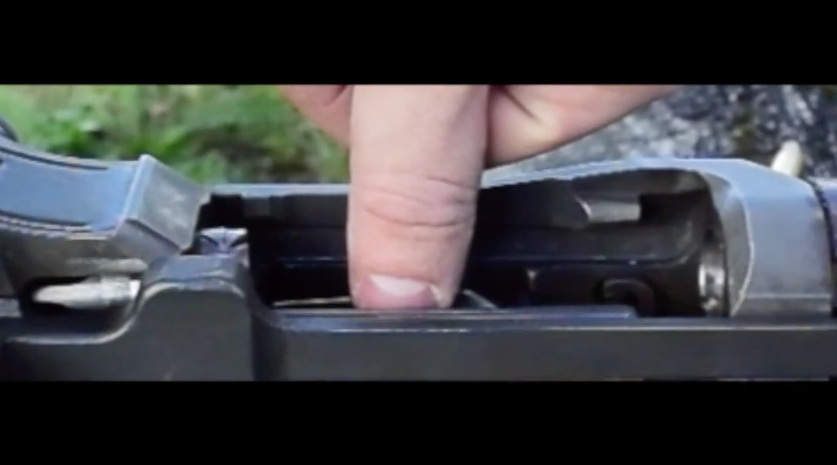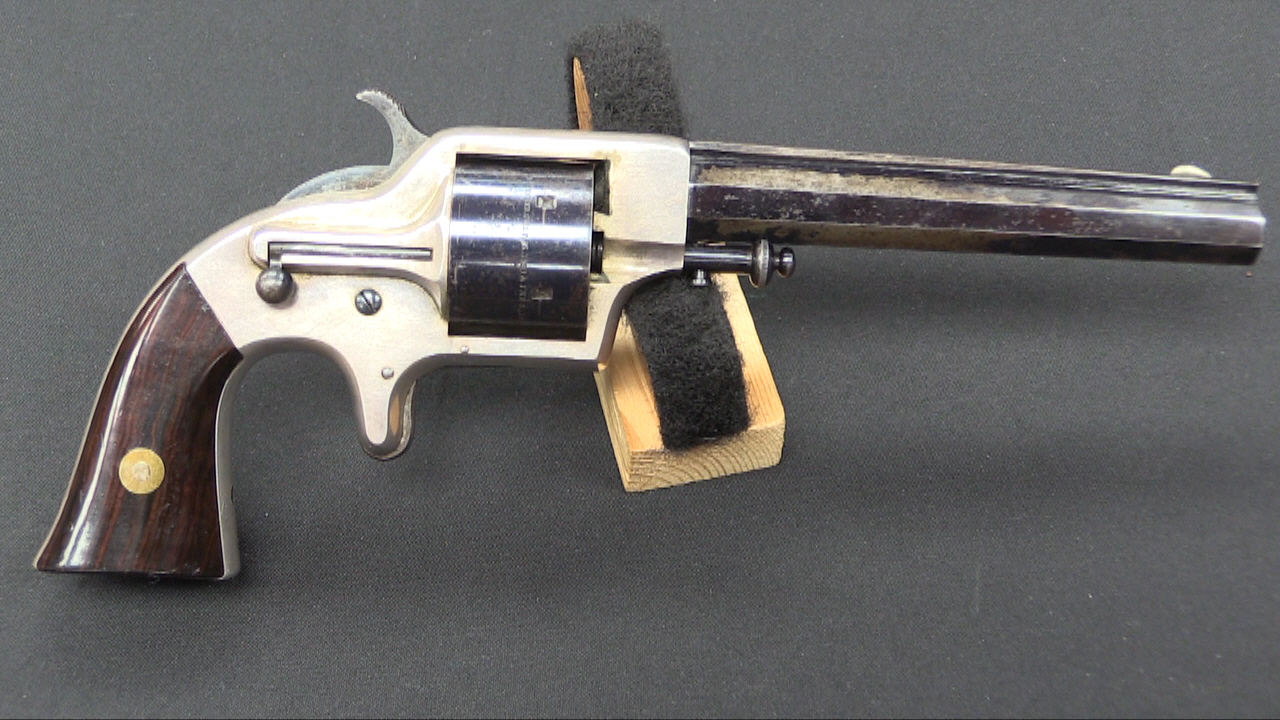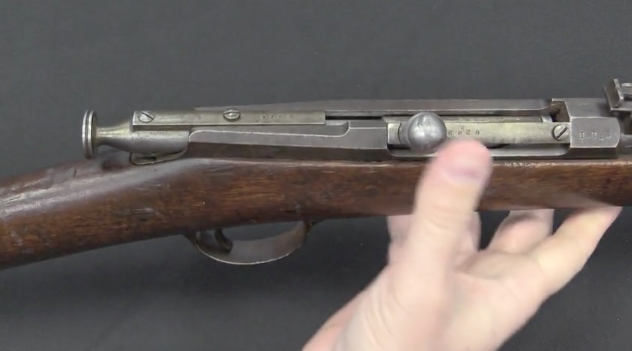Detonics was founded as a company in the 1970s, making high-end 1911 pistols. Their first product that really put them on the map was their 3″ micro-compact 1911; something that just wasn’t available on a production basis at the time. After the .45 Winchester Magnum cartridge was introduced in 1979, Detonics jumped at the chance to now make a higher-power .45 cartridge that would fit the 1911 magazine. Since the .45 WinMag brass was much thicker at the base than .45 ACP, Detonics was able to cut it down to ACP length (actually one millimeter longer, to prevent it from being chambered in a standard .45 ACP chamber). They then cranked up the pressure and were able to increase velocity by 30% over the original .45 – and they called the new round .451 Detonics Magnum.
Detonics made several different models of pistol in their new cartridge, both standalone guns, replacement slides for other frames, and package sets with both .45 and .451 barrels. They were never able to get an ammunition manufacturer on board though, and the .451 remained a hand loading proposition throughout its entire life. This crippled its chances at becoming mainstream, and it remains a very niche cartridge to this day. Its successors included the .45 Super and the .460 Rowland, which survive today but are definitely special-interest offerings.




This is news to me. I’d dearly love being able to purchase the necessary parts to convert my 1911a1. I hand load all my own ammo anyway so that’s not a deterrent.
Why is Ian so old in video, some weird AI filter or what ??
Because it’s the antimatter Ian who has replaced the regular Ian.
True, it was said clones age much faster…
And then there was .460 Rowland. Is it better?
I fired a friend’s handloads through one of the “compact” versions he bought. He had a fetish for high-power loads behind heavy bullets.
One magazine was enough of a taste, for me. I think I’d put the recoil/controllability factor at about “.357 COP with broken mechanism that fired all four rounds at once…”, not that I’ve ever had that particular experience. I do not think that this is a cartridge that ought to go into a small-frame pistol; it needs size and mass to help soak up all of the cartridge.
Either that, or my friend needs to learn how to tone down his reloads. I swear to God, the one time I saw him fire that thing near dusk, I thought it was the damn Obrez he’d put together as a joke.
I guess that “the market” of gun buyers is asking the same question that I’m asking;
what’s the point of hot loading a cartridge and pistol combination that takes most people a bit of practice to shoot well?
especially when the same and better performance are available off the shelf with revolvers and with expensive specialist auto pistols like coonan, grizzly, AMT…
incidentally, if someone sets a capstan lathe up, they can run thousands of hard head .45 cases off in whatever length they choose – and the headstamp will say things like; .308, .22-250, .30-06…..
I was trying to think of a good explanation for using a barrel bushing.
I haven’t found one yet
what bits of manufacturing an additional part, additional tolerances, and tolerance stacking am I missing?
Look up the Cao Dai made copies of the M1911 and FN P-35 from the Vietnam War. Almost all of them had a 1911-type separate barrel bushing; yes, even the High power ‘clones’.
With the tools they had, it was easier to make a slide with a “hole” up front and the correct lug-cuts for a separate barrel bushing than it was to make one with a “blind” hole for the recoil spring as on the FN.
Also, a barrel bushing isn’t as hard to make as you might think. Get a piece of heavy-wall steel tubing (or even water pipe!) of slightly greater OD than the final bushing, turn the outside down on a lathe except for the lugs, fine the inside with a tap on the lathe, then cut the flat “front” of the bushing from 1/8″ flat steel stock, cut a hole in it to fit the “tube”, harden and temper both pieces separately in a forge, and finally weld or silver-solder the two together.
See Pistolsmithing by George Nonte.
cheers
eon
I remember reading a review of one of the little compact .451 detonics magnums in guns and ammo back in about 82 or 83.
It wasn’t quite down to the educational special needs level / very hard of thinking, level that it is at today.
It’s interesting to see things in Ian’s vid, that I can recognise with the little bit of knowledge of mechanics and manufacturing technology that I’ve picked up in the intervening 40 years
the cast construction, evidenced by the cast-in matte texturing at the bottoms of those broad gripping grooves at the back of the slide
the polishing of the sides of the slide on a belt sander
what appears to be a barrel cut from bar or plate.
not that there’s anything wrong with either of those
Detonics was doing some very state-of-the-art work; the company came up out of the mass of aviation machine shops and supporting industries in the Puget Sound area that catered to Boeing and all the rest of the region’s aviation. As such, there were cutting-edge manufacturing techniques involved that were normally used in building things like landing gear struts and so forth.
Machinist acquaintance of mine said there were things in the Detonics pistols that simply hadn’t been possible to do, back around John Moses Browning’s time.
I honestly don’t know that I’ve ever heard anyone complain about parts failures or bad machining on the original line of Detonics pistols. Any complaints usually had rather more to do with the subcompact format and other issues than anything else about the pistols… They always had a good reputation for reasonably high quality, and generally just working right out of the box. Later iterations under different management weren’t quite as stellar…
I remember seeing someone selling a New-In-Box original Detonics from one of the early production runs, and getting some truly unGodly amount for it, like $5,000.00 or something. And, that was back around the mid-2000s. They were well-liked pistols.